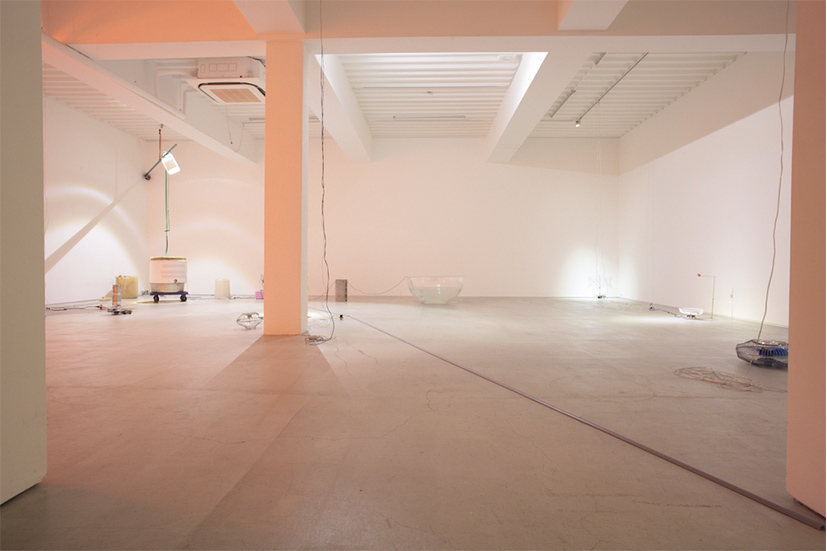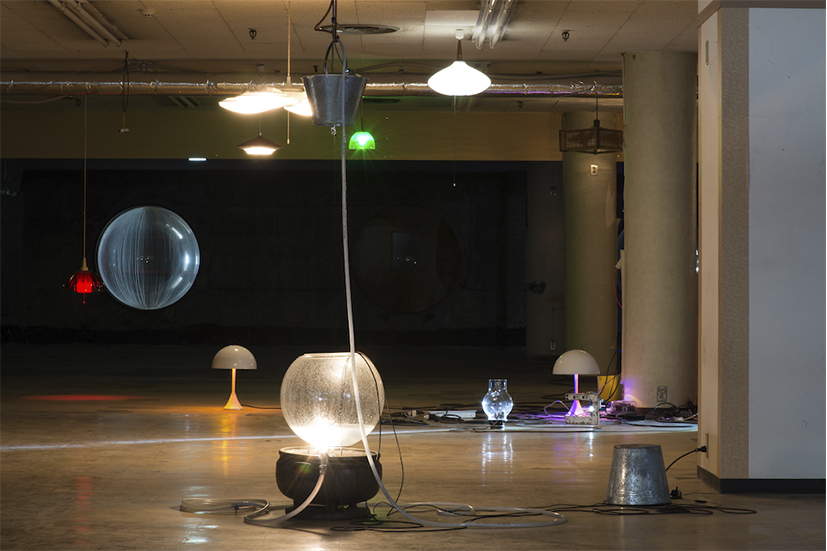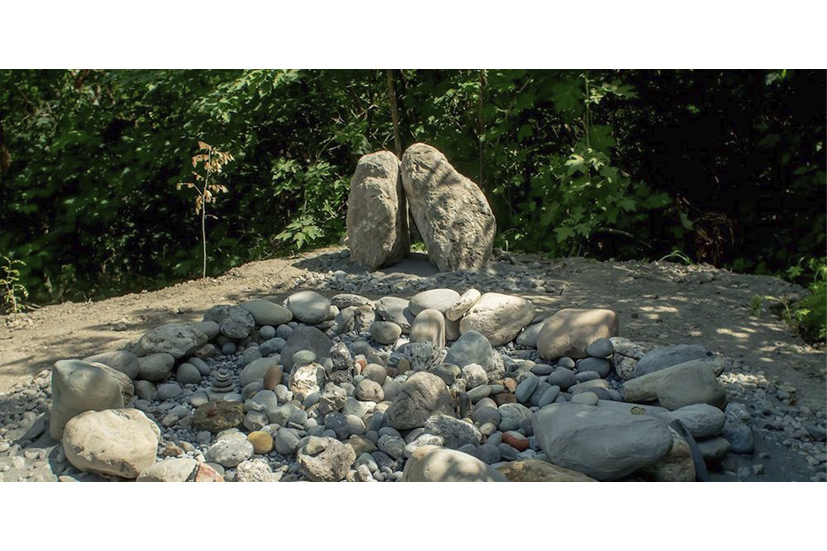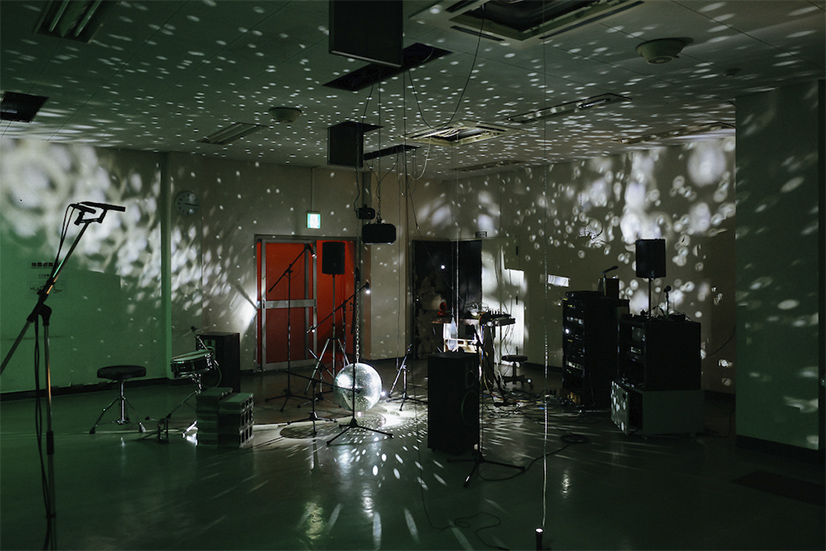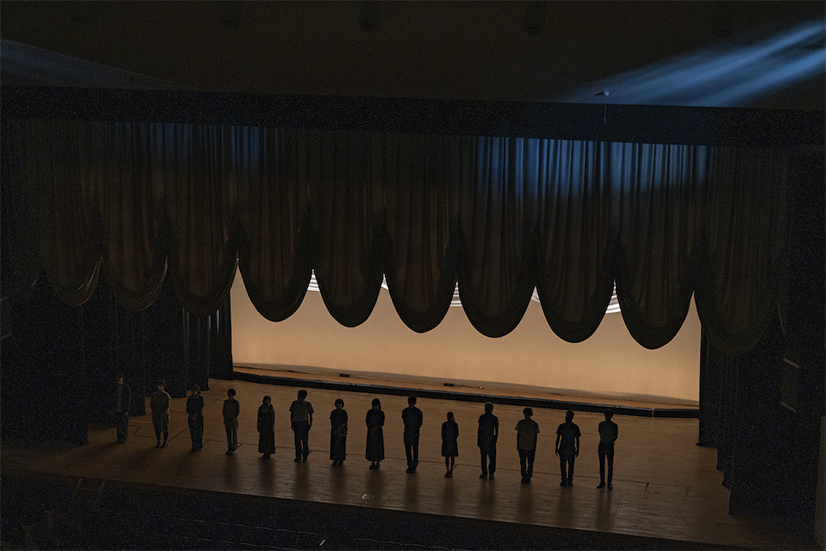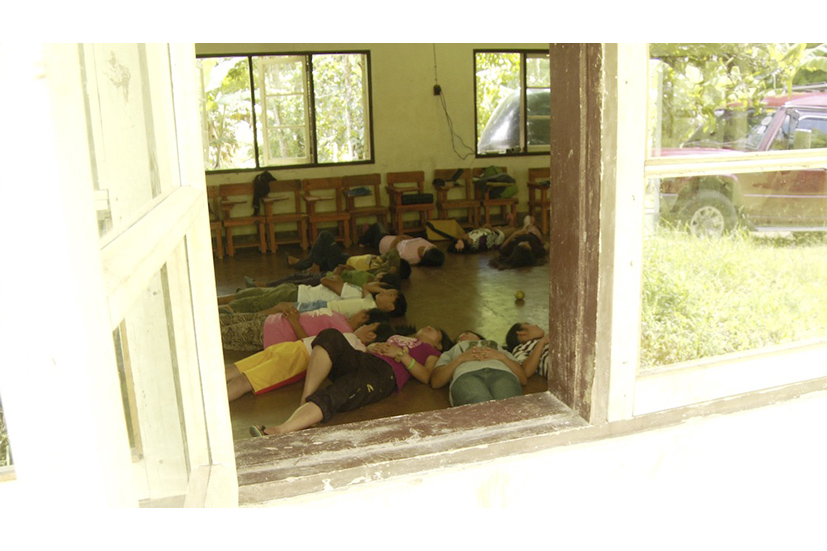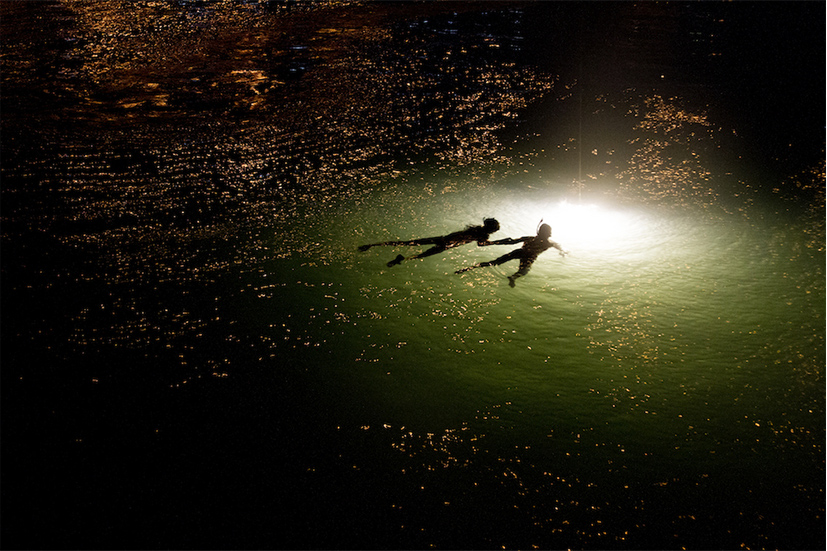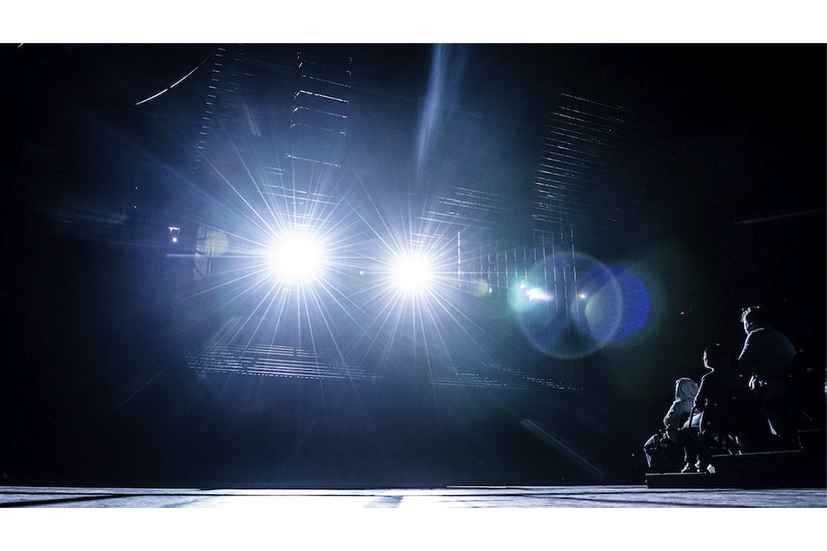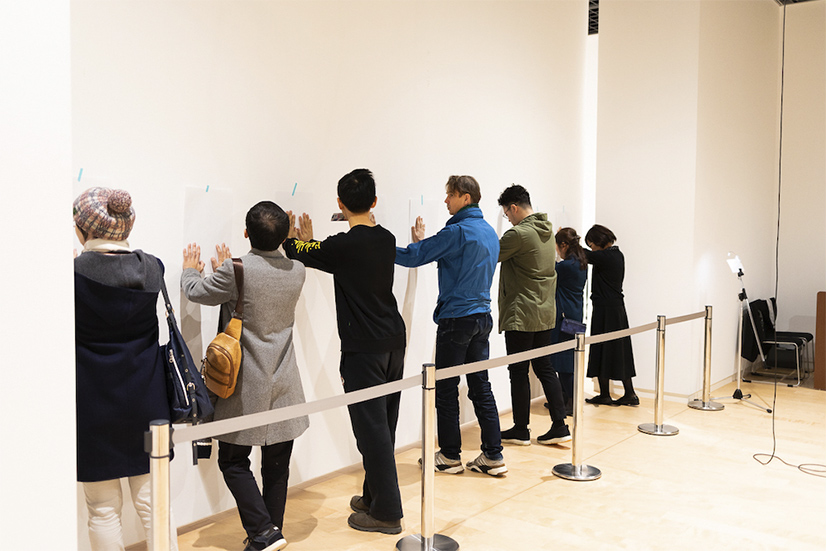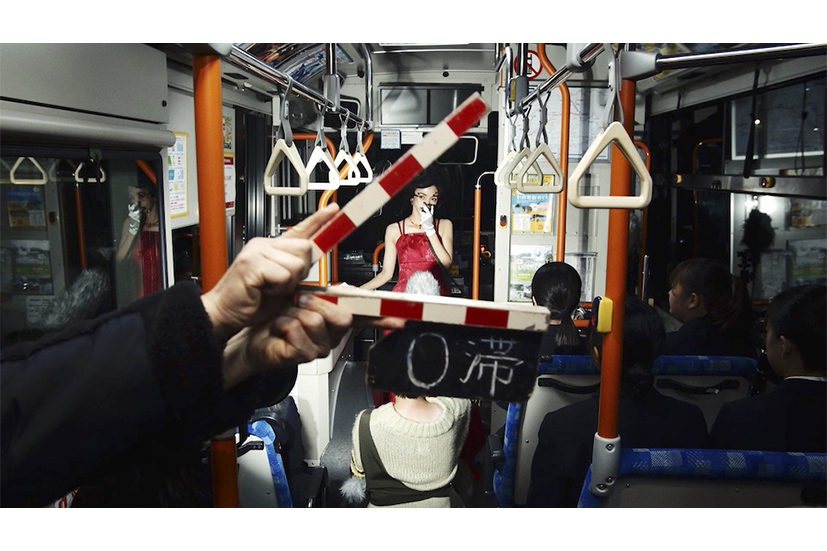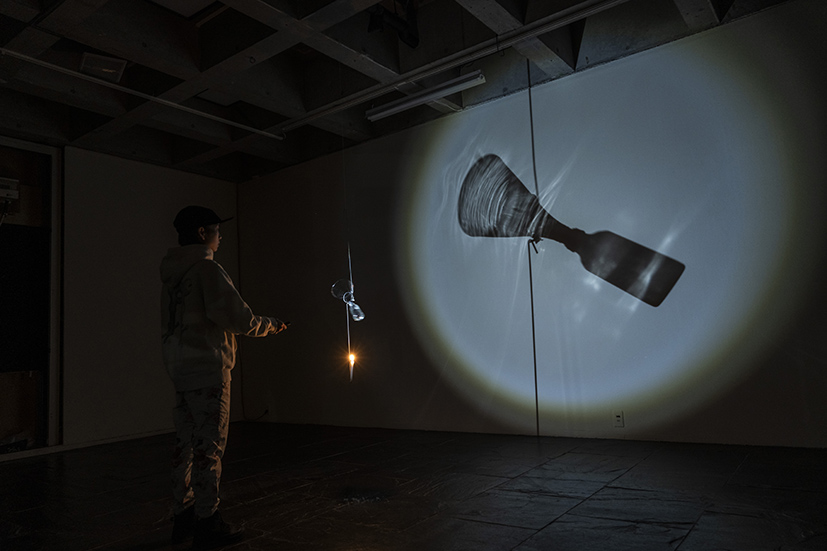Interview with an award winner
TCAA 2024-2026
UMEDA Tetsuya
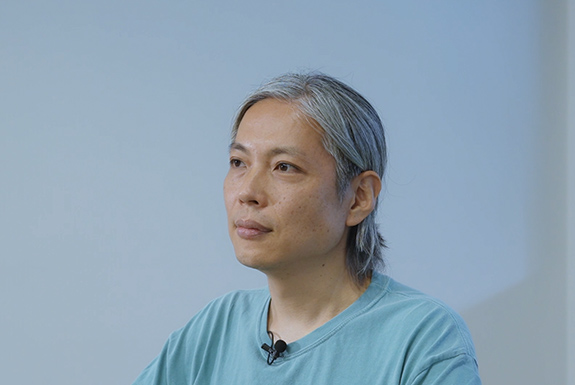
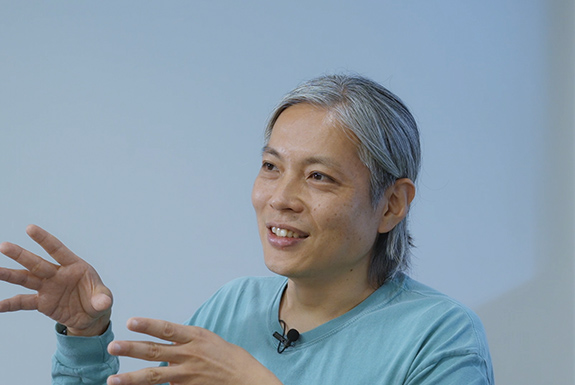
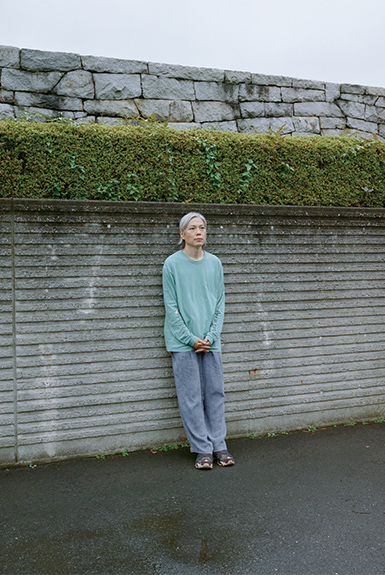 Photo & Video Documentation: Hiroyasu Shieh
Photo & Video Documentation: Hiroyasu Shieh
Sound: Kengo Yokoyama
Profile of Umeda Tetsuya is available here
During the final screening for the TCAA, you produced some sounds. When you are thinking about your performances and exhibitions is it sound that is your starting point?
In my case I often don’t know what I am going to make when I start on a work, so I don’t really intend to have anything like a basis. But without doubt, sound is an extremely important judgmental criterion.
It is said that things can be seen because light shines on them. In the same way, I think that we can gain an awareness of spaces and materials from the reflection of sounds. Just as we have shadows from light, I believe that sound produces something akin to shadows. Looked on the basis of effects such as reflections and shadows or things like reactions, and even if I don’t particularly have that intention, objects seem to spontaneously determine their own places.
Can you tell us about your main fields of activity and career up to now?
From around the year 2000 I started live performances at clubs and small music venues using moving speakers and objects made by converting home electrical goods. This is directly linked to my current work.
When I was doing these performances, I came to know the guitarist Uchihashi Kazuhisa. I was involved from the start of the setup of a small music venue he was working on, and I gained the opportunity to perform at a big music festival. After that my range of activities suddenly started to expand.
Eventually I was asked to appear at overseas music festivals. In those days I started to go round various nearby countries on tours. My own case was a little unusual, but it was just by coincidence that the stage for my activities was the musical stage.
The things I’m doing now are not so different, in fact they are completely the same as what I was doing then.
There is no change in the way that when I am given a stage or platform I always think from square one about what would be interesting to do. I’ve been working across genres such as theater and exhibitions from quite an early stage.
Then I gradually started to be thought of as a person who does strange things. They are not “strange things” from my perspective; my intention is simply to straightforwardly do what I want to do. But I think that I have been seen as someone who does things a little different from what was expected. Also, wherever I go I’m treated as an outsider. At art museums I’m introduced as a “sound person” or “stage person,” whereas on the other hand at halls and theaters I’m introduced as an “art person” or an “art-related person.” I never felt that I have a place where I belong. That is conversely comfortable, though. That’s how I’ve felt as I have carried out my activities.
Do you think that your early work became recognized and then you extended your activities to include exhibitions at art museums and so on?
My art museum exhibitions and my prior work is not that disconnected.
The difference between performances and exhibitions can sometimes only be distinguished simply by things like time length, and whether I’m actually there or not. In the case of exhibitions, at first the majority of my works focused particularly on sound, and I did a lot of sound art projects.
Is it the case that it’s only the places and formats for presenting your work are different, and you present them with basically the same way of thinking as before?
That is my original awareness. It just happened by coincidence that the first opportunity I had for presenting my work was a musical event. If it hadn’t been a musical event, it’s possible that I wouldn’t have gained so many opportunities. After repeatedly presenting works on stage and at exhibitions and art museums it is not necessarily just the material side or the physical spaces that exert an influence on works, rather, it is inevitably the context of the presentation that has a considerable impact. Even if I did exactly the same thing, the way that it would be received would be different in an art museum to in a theater. I think that my interests have widened as I have gained experience, and I have come to present those interests.
-
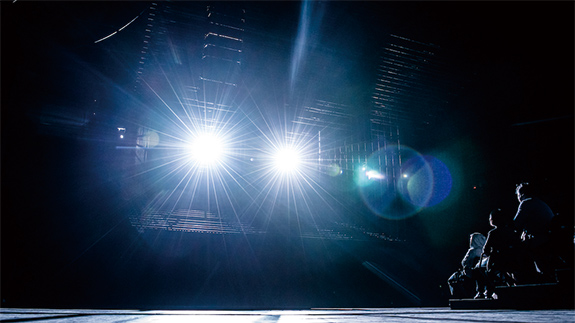
“INTERNSHIP” performance at Asia Culture Center, Gwanju, South Korea, 2016 ©Rody Shimazaki
-
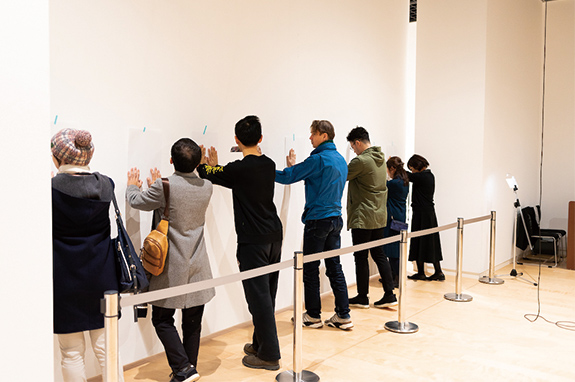
Installation view at “On the origin of voices,” Fukuoka Art Museum, 2019 Photo: Yamanaka Shintaro (Qsyum!)
-
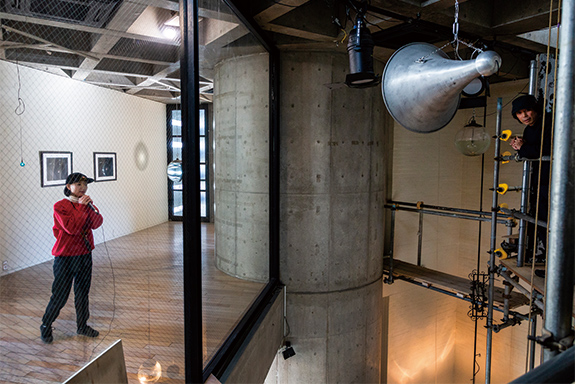
Performance at “wait this is my favorite part,” WATARI-UM, The Watari Museum of Contemporary Art, Tokyo, 2023 Photo: Kanagawa Shingo
-
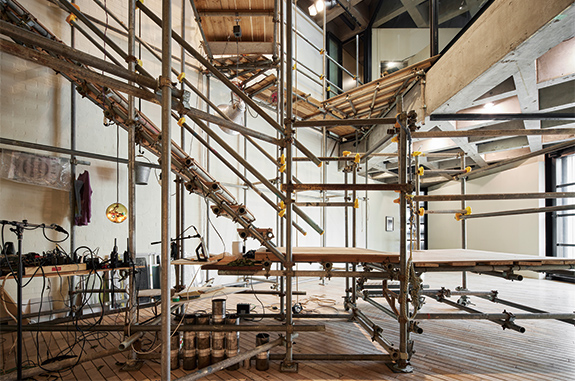
Installation view at “wait this is my favorite part,” WATARI-UM, The Watari Museum of Contemporary Art, Tokyo, 2023 © Nacása & Partners Inc. FUTA Moriishi
Was there anything during the Q&A session in the final screening of the TCAA selection committee that left a particular impression on you?
Thus far I have frequently been told that my activities are hard to put into words, and that they are elusive. I felt that the initial atmosphere at the final screening was much like that. So I had a feeling from the start that there wasn’t much point in explaining it any further.
However, speaking conversely, the reasons for the award were that my “experience-based activities are an ethical approach,” in addition to which I handle “complex themes but the way those complex themes are handled is based on trust toward the viewer.” I haven’t really explained my work, and that’s why I felt that my attitude and stance towards creating had been positively evaluated, which I remember made me feel really happy.
As of the recording of this interview (July 2024), you have worked overseas once as support by TCAA. Did you make any discoveries or have any encounters? Could you tell us about your plans for your future overseas activities?
I had two performances in Europe during April anyway, and I was open for the intermediate fortnight. Usually, I would have gone back to Japan, but this time with the support of the TCAA I had some support time left. So I used it to go around three or four places that I had been interested in. The TCAA Award Exhibition was going to showcase not only me but also Oh Haji, so I thought I’d take this time to find some compatible points with her work. I wanted to search in both of our works for spatial and architectural, as well as thematic points of compatibility, and link them to the exhibition. With the intention of doing that research I went to Denmark and the Netherlands and looked around their modern architecture. In addition, I thought that Oh Haji and I had a common point in the subject of water, which I have long dealt with as a theme. So I went to the trading ports of Amsterdam, Venice and Rotterdam and went on boats to record sounds.
I’ve actually had quite a few chances to exhibit my work overseas up until now, regardless of genre.
But up until now, in the midst of situations where the output and deadlines were unclear, I have hardly ever conducted research for the sake of creating my works. You need a bit of time to do this sort of research, so this time was like a luxury to me, and I think it was really important. I learned as a person the importance of setting aside in one schedule at least the bare minimum of time to spare, as well as communication.
I’m planning many chances to go overseas in the future and I hope that, like my activities this April, I will be able to stay abroad by finding time in between other schedules, although I’m not sure whether this will be feasible at the moment.
One of the places that I am hoping to go to in the future is Argentina. I’ve used the Argentinian capital of Buenos Aires in quite a few of my works. However, I have not personally been there yet and I have used it as a sort of metaphor for some place very far away from me. I feel that I would like to actually go to Buenos Aires, hear the music, and see the boats and the things that have some sort of connection with my work.
Will you actually go and listen to ‘0 Tai’ sound used in your 2020 “Umeda Tetsuya in BEPPU ‘0 Tai’ work?
It would be interesting if I could go. In the Beppu project, if you make a satellite radio and go to a certain point, you can hear the sound of it using the GPS function. There is a point quite some distance offshore of Argentina, and its antipodes is an old well that is one of the points in Beppu. That point is where the exit would lie if you were to pierce through the center of the Earth and come out the other side. I think it would be extremely difficult to get there but it would certainly be interesting if I could go and check the point when I visit Buenos Aires.
I’d like you to tell us a little about the exhibition at the Museum of Contemporary Art Tokyo.
During the preliminary inspection I had the impression that it was not just the exhibition halls but also their vicinity and the facilities of which the museum is composed that you were paying attention to.
Each time you exhibit or perform, are there any parts of the surrounding or wider environment that interest you?
I start by looking at the architectural features including the structure and interior decoration, accompanying factors such as how the light is let in, and the evacuation routes and regulations. I also check the sound environment and acoustics. These are things that you can’t understand without actually going to the place, but you can if you do go. I start by searching for or looking at these things. Things like the history surrounding the place and topographical factors have to be investigated later. I want to investigate everything that can be investigated. Unless I make the context the criterion, it is difficult for me to present the difference between fixed sets of values and the new set of values that I am proposing. In the case of the Museum of Contemporary Art Tokyo, the inner courtyard and the pilotis*1 with water are really attractive and so large, but don’t gain much attention and have a feeling of isolation. I love these sorts of places, and some people say the park is nice. There are many places that used to be water channels and it really fires my imagination. I think it’s an interesting place that provides much inspiration.
There is still over one year to go, so I suppose certain things will change, but can I finish the interview by asking you to give us a rough idea of the exhibition and anything that you are thinking about now?
One thing is the question of how far the two of us can display our exhibits. As you say we do still indeed have over one year to go. However, during the meeting I had with Oh Haji just now, we talked about fairly specific things. I think this is a little different from the conventional ideas we’ve been used to hearing. I suppose that the main work of Ms. Oh, I and the museum will be to find a mutually tolerable line, or in other words a point of compatibility. If none of them are acceptable I will escape outdoors. I really don’t want to think about that at the moment, but I think outdoors is a possibility.
*1 The Sunken Garden and Water and Stone Promenade at the Museum of Contemporary Art Tokyo.
